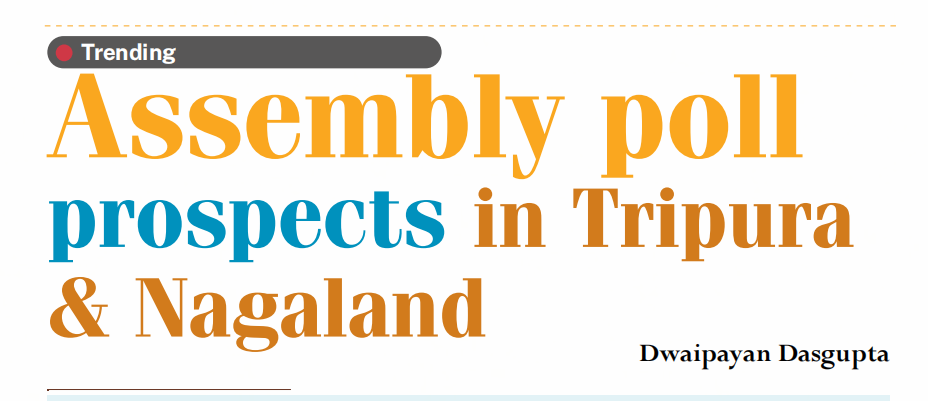
Election is a crucial democratic process of plumping for suitable individuals to run an establishment. With barely few weeks left for Tripura and Nagaland along with Meghalaya, to go to the State Assembly polls on February 16 and 27 respectively, heightened political activities in the form of strategy and realignment by leaders of contending parties are going on these days in all these poll-bound States, which have 60-member Assembly. Although the much-awaited poll schedules have been announced by the Election Commission, campaigning by contesting political parties is yet to gain momentum with the process of realignment and finalisation of lists of nominees for the elections by leaders of some parties being delayed by State-based social groups seeking to form a regional platform with like-minded parties to fight the upcoming elections on the major plank of a separate statehood in both Nagaland and Tripura.
Tripura
At the start, to say about Tripura, currently, the BJP is running a coalition government with the Indigenous People’s Front of Tripura (IPFT) in the State, an influential party which allied with the Saffron party in the 2018 Assembly election and won eight seats out of the nine seats it contested. The BJP contested as many as 50 seats that year, and bagged 36 seats. The party thus scripted some sort of history in Indian electoral politics for the first time by ensuing a clean sweep in the Tripura State Assembly election and putting an end to the CPI(M)-led Left Front rule for 35 years in two phases (1978-1988 and 1993-2018). The Congress party on the contrary, fought it alone by fielding 59 seats but drew a blank. But Tripura’s former ruling party, the CPI(M), however, fared relatively better despite an anti-establishment wave against it, when the party garnered 16 out of 56 contested seats. Other political entities in the fray, namely the Trinamool Congress, CPI, FB etc, failed to open an account.
An assessment of the impressive performance of the ruling BJP in 2018 lays bare the fact that its emphatic victory can be ascribed to two major contributing factors – the ant-incumbency factor against the CPI(M), and its pre-poll alliance with the IPFT. This time too, it may be smooth-sailing for the ruling BJP to repeat last year’s performance in the event of the CPI(M) and the Congress entering into a seat-sharing agreement. The TMC leaders said, that they will not join the CPI(M)-Congress combine and contesting the upcoming Assembly election in Tripura solo. They put up candidates where the party has a chance to win. But if the IPFT, the BJP’s ally agrees to jointly contest the upcoming election with the Tipra Progressive Regional Alliance (TIPRA), a newly-floated tribal party, what will be the electoral fortune of the Saffron party… is difficult to infer till the poll campaigning reaches a feverish pitch.
Nagaland
As far as Nagaland is concerned, it currently has a ‘no-opposition’ NDPP-led all party government. Nine-time Chief Minister Nephiu Rio is the NDPP President. In 2018, the BJP, a constituent of the ruling NDPP, fielded candidates in 20 seats and bagged 12 seats, while the NDPP of Rio won 16 out of 40 seats it contested. This time too, the ruling NDPP would as usual put up candidates in 40 seats, while its ally BJP would contest in the remaining 20 seats in Nagaland. The BJP would go it alone in Meghalaya.
To read the further articles please get your copy of Eastern Panorama February issue or mail to contact.easternpanorama@gmail.com


